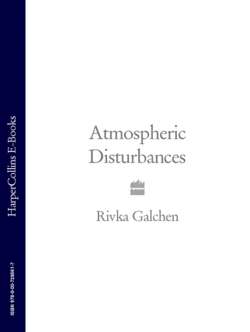Читать книгу Atmospheric Disturbances - Rivka Galchen - Страница 18
8. Single-Doppler weather radar
ОглавлениеIn the salad days of Gal-Chen therapy I used to like to watch NY1 weather and think of Tzvi as the man behind the scenes, the unsung hero who made it all possible, deploying Doppler radar technology and interpreting the data at record speeds, simultaneously forecasting for all five boroughs. It was a light thought, a happy hyperbole, one of the many childish banalities that made up my daily secret life. Not much of a secret life, but enough. Enough to let others—Rema, I hoped—project something grander onto those private spaces. But my projections onto the unknown Tzvi—it turned out they were insufficiently ambitious, palest shadows of the truth.
Tzvi Gal-Chen’s contributions to the field of radar meteorology include a series of “retrieval” papers, all of which confront the problems of translating Doppler weather radar data into real-world, and eventually real-time, information. Familiar enough. But Tzvi focuses in particular on how valuable data retrieval can be accomplished with a single-Doppler radar; in this way his research represents a break from more conventional retrieval methods involving dual-Doppler radar systems: two radars, distant from each other, looking at more or less the same volume of air from perpendicular angles so that real-world information can then be divined through triangulation. Why not stick with dual-Doppler radar systems? Tzvi describes his motivation for developing single-Doppler retrieval methods thusly: “Perfectly coupled radar systems are rare, if they exist at all.” And “dual-Doppler analysis requires accurate calibration of radar antennas and simultaneous operation of both radars.”
Whereas I was genuinely alone. The therapeutic relationship, like, for example, the mourning process, is inherently asymmetric. I suppose I had let that sort of asymmetry leak into all aspects of my life, so while I had a number of pleasant professional relationships, I had no one I could really turn to for advice about Rema’s replacement, no one whom I could simply call upon as a friend, as a second. Except for Rema, and Rema wasn’t there. I admit that it’s generally better to consult another person, to adjust for a limited perspective, for the distortions of perception. If I’m wondering, for example, “Do I look haggard?” it would be useful to have another person’s eyes on me; between the two of us we might be able to settle the question near the truth.
But given the particulars of the situation, corroboration was an unreasonable expectation. I’d have to proceed on my own.
The limits of my knowledge and education inevitably restrict my comprehension of Tzvi’s work, so far outside of my own discipline, but I have come to understand the basic ideas quite well.
Doppler radar turns to advantage what is known as Doppler effect, an oft-misunderstood concept. Doppler effect describes an apparent—as opposed to actual—change in frequency or wavelength. It is the change perceived by an observer who is, relative to the wave source, in motion. Textbook example: as a speeding car approaches, the sound it emits appears to go up in pitch, in frequency. But in actuality, the emitted frequency—the car’s trembling of the air around it—does not change at all. It only seems to change.
Let us imagine a source from which a Rema look-alike emerges every second.
If the source is stationary, and I am stationary, then every second one of these Remas will pass me by.
But if the single observer, again let’s say me, begins walking toward the source of Remas, then a Rema will pass by me more frequently than every second, even though Remas are still exiting the source at the precise rate of one per second. From my (walking) perspective, there is now less spacing between the Remas, and therefore the wavelength has been affected, the perceived frequency of Remas has changed, has increased.
One might also consider the case of my remaining in place, and the source of Remas moving toward me. Or the case of myself and the Rema source both moving. Any frame of reference will do. If in the sum of movement vectors, the source and I are moving away from each other, then Remas will pass by less frequently, the perceived frequency of Remas will have decreased. (A lower pitch will be heard from the receding car.)
Being aware of this distortion of perception allows scientists to take advantage of the distortion itself in order to gather accurate data about the actual, and not just the perceived, world. In fact, more and better data than could be gathered if the distortion did not exist. Doppler effect refers to these distorted perceptions, and Doppler radar’s utility relies on savvy interpretations of these distortions that, properly understood, enable a more accurate understanding of the real world.
More or less, that is the Doppler effect, most famously used to come to the conclusion that the universe is expanding, since no matter which way a radar is pointing, it detects a redshift, the visual manifestation of wavelengths bouncing off of a receding source. That had been a surprise: the universe, in every direction, was leaving us (and apparently looking beige while doing so). I’m not sure if it’s wrong or silly to feel more sad and lonely on account of such facts, facts like the universe’s expansion, but somehow I do feel that way. But back to the point: Doppler effect. Or as I have come to call it in my more personal experience of it: Dopplerganger effect.
